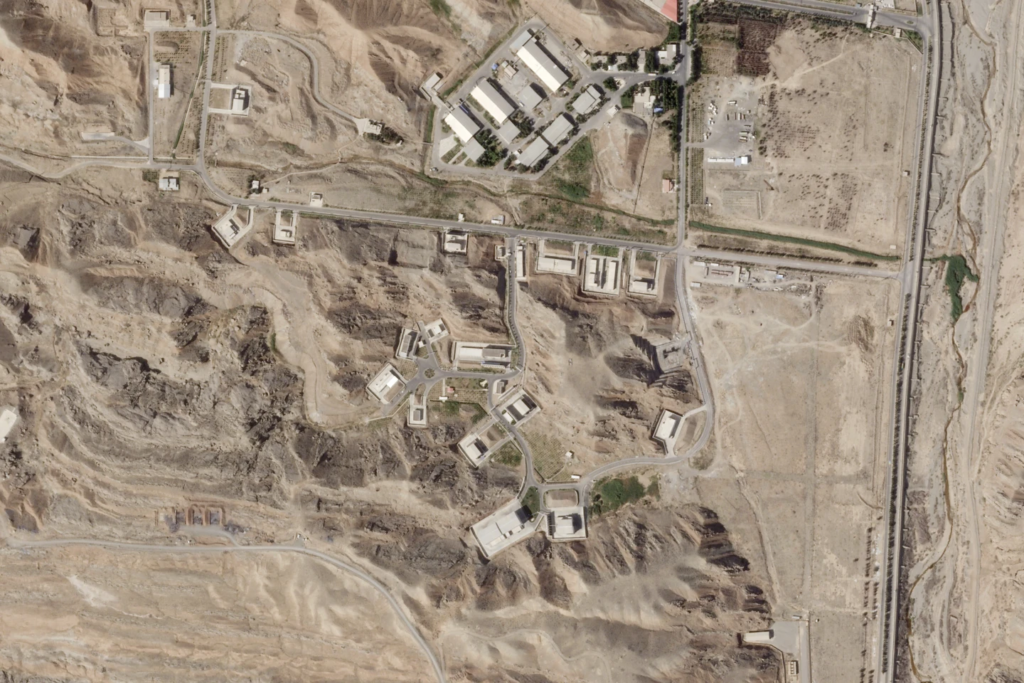In a recent escalation of Middle Eastern tensions, an Israeli airstrike on Iran has reportedly caused significant damage to military facilities linked to Tehran’s former nuclear weapons efforts and its active ballistic missile production. Satellite imagery, analyzed by the Associated Press and various experts, revealed extensive damage across multiple sites, particularly at Iran’s Parchin and Khojir military bases.
Attack Details
airstrikes occurred early on Saturday, with Israel targeting key military assets across at least three Iranian provinces, including Tehran. In satellite photos, some of the most severe destruction was visible at the Parchin military complex, approximately 25 miles south of Tehran. International Atomic Energy Agency (IAEA) has long scrutinized this site, suspecting Iran once conducted high-explosive tests that could be relevant to nuclear weapon development. While Iran maintains its nuclear program is purely for peaceful purposes, IAEA and or international watchdogs assert that Tehran’s military-focused nuclear activities persisted until at least 2003.
In addition to the Parchin complex, damage was observed at Khojir, a sensitive military site that houses underground missile facilities. This base, roughly 12 miles from downtown Tehran, is widely believed to be a center for producing and maintaining Iran’s missile arsenal, which has become increasingly sophisticated in recent years.
Iranian and Israeli Responses
Iran’s government has yet to officially acknowledge the extent of damage at Parchin and Khojir. However, state sources did confirm the deaths of four Iranian soldiers working in air defense capacities. Iranian Supreme Leader Ayatollah Ali Khamenei addressed the attack, calling for “caution in response” but avoiding a direct threat of retaliation. Meanwhile, Israeli Prime Minister Benjamin Netanyahu lauded the airstrike as a success, claiming it had “severely impaired Iran’s capabilities.”
The Iranian mission to the United Nations has not responded to international inquiries about the attack, and Israeli military officials have declined further comment.
High-Profile Targets
Among the targets was a facility at Parchin known as “Taleghan 2,” a building previously flagged by international experts for possible nuclear-related testing. Institute for Science and International Security, a Washington-based think tank, recently identified this structure as containing a high-explosive chamber for simulating the initial stages of a nuclear detonation. This assessment is based on intelligence released by Israeli officials in 2018, which detailed alleged Iranian nuclear-related sites.
At Khojir, analysts confirmed that buildings involved in the production of solid missile fuel were also targeted. Decker Eveleth, an analyst at Virginia-based think tank CNA, pointed out that damage here is likely to hinder Iran’s ability to produce ballistic missiles on a large scale. This could be a strategic move by Israel to disrupt Iran’s growing missile stockpile, which has been a primary source of regional tension.
Impact Across Provinces
Additional damage has been reported in Ilam province, bordering Iraq, where satellite images showed burned fields around Tange Bijar, an area involved in natural gas production. However, it remains unclear if this damage was directly caused by an airstrike or if it resulted from secondary effects, such as fires sparked by nearby explosions.
International Concerns
Following the attack, IAEA Director-General Rafael Mariano Grossi confirmed that Iran’s nuclear facilities were not directly impacted. He stressed that IAEA inspectors continue their oversight duties, urging “prudence and restraint from actions that could jeopardize safety and security of nuclear and radioactive materials.” This statement underscores the critical balance between curtailing Iran’s potential for weaponization and avoiding further destabilization in an already volatile region.
Strategic Implications
Israel’s precision strikes, largely avoiding civilian areas, contrast starkly with Iran’s ballistic missile assaults on Israel earlier this year, which included several civilian areas. Israel appears to be maintaining a targeted approach, potentially seeking to diminish Iran’s military manufacturing capacity without triggering large-scale conflict.
Iran’s ballistic missile program remains robust despite setbacks from Saturday’s attack. U.S. Senate heard testimony in 2022 from Gen. Kenneth McKenzie, commander of U.S. Central Command, estimating that Iran’s missile arsenal numbered over 3,000. While many of the missiles lack the range to strike Israeli targets, Iran has demonstrated its ability to conduct short-range missile operations across the region, as seen in April and October barrages.
Looking Ahead
the strike represents a significant chapter in the ongoing Israel-Iran conflict, as both countries reassess ir military postures. Israel’s recent actions signal a willingness to target critical sites within Iran, while Iran’s leadership faces mounting pressure to respond decisively without risking full-scale retaliation. As the region watches closely, international analysts suggest that Iran may seek less direct avenues for reprisal, potentially through proxies or asymmetric warfare, to avoid provoking further escalatory actions from Israel or its allies.
This incident highlights the fragile stability of the region, with global powers and regional stakeholders now closely monitoring for any signs of escalation. The coming weeks may prove crucial in determining where the longstanding standoff between Israel and Iran intensifies or if diplomatic channels can mitigate further conflict.

